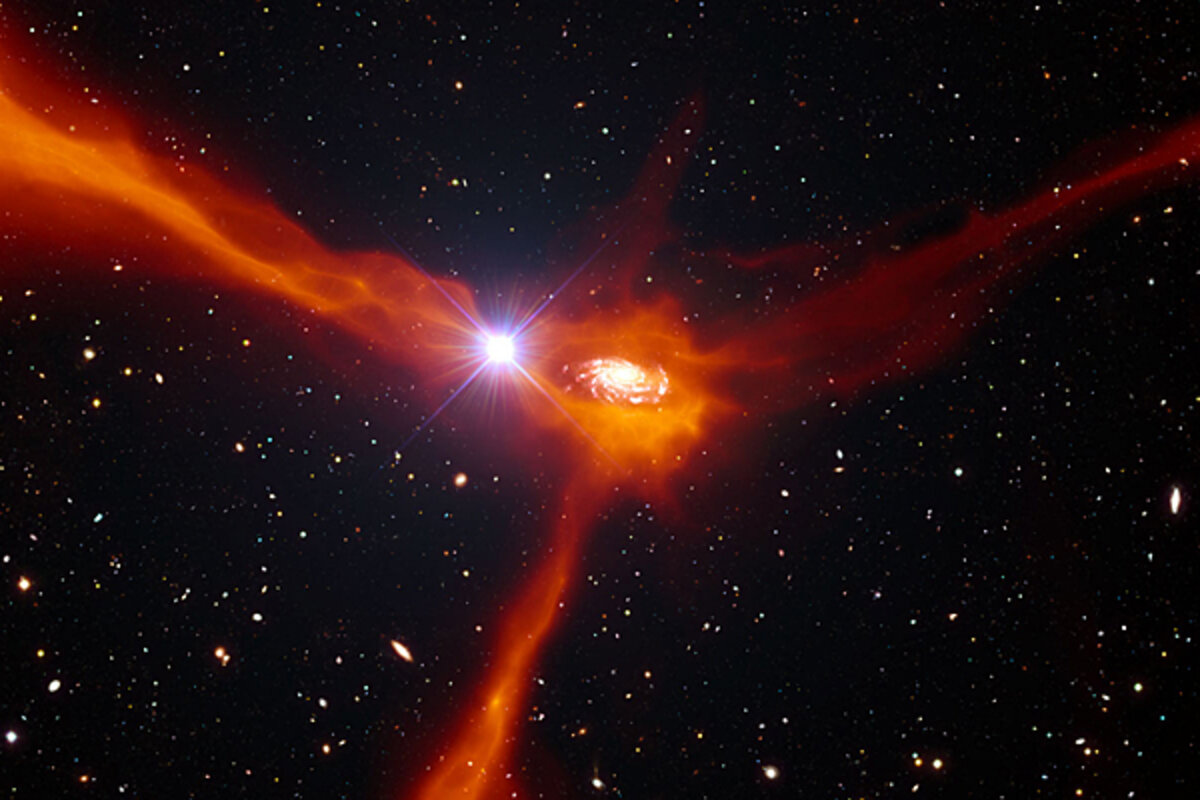How do galaxies fuel up? Hungry infant galaxy offers clues.
Loading...
A galaxy about four fifths of the way to the edge of the observable universe offers new insight into how galaxies fuel up.
Using data from the European Southern Observatory's Very Large Telescope, an international team of researchers have spotted a galaxy some 11 billion light years away. Because it is so far away, and because the light from it moves at a finite speed, to us the galaxy is just a baby, a mere 2 billion years old.
Backlighting this unnamed infant is an even more distant quasar, an extremely bright galactic nucleus illuminating a halo of gas around the galaxy.
"When we discovered the galaxy, that was exciting enough," writes Michael Murphy, an astrophysicist at Swinburne University of Technology �������ѱ�����dzܰ��Ա�, Australia and a co-author of the study, in an email to the Monitor. "But then we noticed some signs in the quasar light of additional gas, beyond what we'd expect from the rotating galaxy. "
It turns out that the galaxy, which appeared to be at a stage when its star-formation activity was at its peak, was feeding on the gas, using it for material to make new stars.
Astronomers have long suspected that galaxies feed on external space gas. After all, there isn't enough matter inside the galaxies to keep forming new stars after the first billion or two years. But the actual motion of the gas and its properties had not been observed until now.
"Our study shows unambiguously that the gas is infalling," writes Nicolas Bouché an astronomer at the Research Institute in Astrophysics and Planetology in Toulouse, France, and the study's lead author, in an email to the Monitor. "To be more precise, we see the gas moving in the same direction as the galaxy's rotation, but not fast enough to balance gravity."
The inflow of the gas is likely "spinning the galaxy up," by increasing its angular momentum, adds Dr. Murphy. "It's like stirring a whirlpool faster by running your hand around the outer part of the pool." The galaxy is spinning at roughly 350,000 to 400,000 miles per hour, a bit slower that the Milky Way, which whirls at about half a million miles per hour.
"The importance of our work is that we've identified the signatures of that process for the first time in such a distant galaxy," writes Murphy. "We found that there's enough gas flowing in to feed the large appetite of this galaxy for forming new stars, equivalent to making about 30 of our Suns per year."
"" appears in the current issue of the journal Science.





